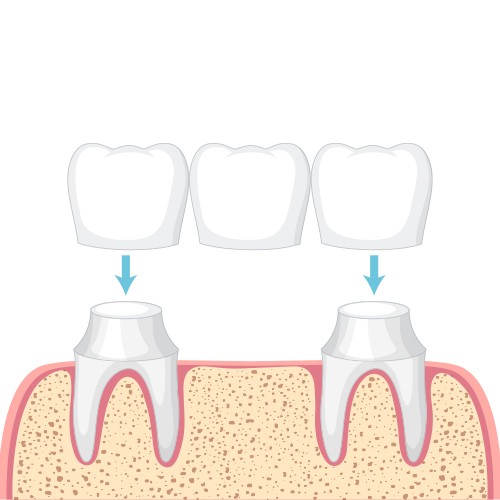
Crowns and Bridges
A dental crown can be used to cover a damaged or decayed tooth or to replace a lost tooth when it is placed on top of a dental implant. Dental implants are metal anchors that are surgically attached to the jawbone beneath the gums. Osseointegration is the process through which metal implants get attached to your bone (the bone fuses to the metal). This process creates a steady foundation on which you may rely when eating and speaking. The recovery time after receiving an implant, according to the Cleveland Clinic, might range from 6 to 12 weeks. Your dentist will then insert a metal post (or abutment) into your implant, onto which your crown will be mounted.
Bridges, on the other hand, are only used to replace teeth that are missing. They consist of two crowns, one on each end, and a bridge of replacement teeth that lie in the gum line where tooth loss has occurred. The crowns at the ends of a bridge can either fuse to existing teeth (which will need to be filed down by a dentist to fit correctly) or be attached to dental implants.
Regardless matter which of these tooth replacement choices is ideal for you, they can be quite beneficial to your oral health. Gaps in regions where teeth have been lost might cause your other teeth to rotate or shift into the empty spaces, resulting in a poor bite. Furthermore, losing teeth might result in a variety of problems.
We at Dentalia treat your dental problems With equal emphasis on cosmetic dentistry and tooth restoration. Experience state-of-the-art crowns and bridges treatment leading you to overall oral health.

